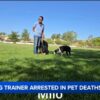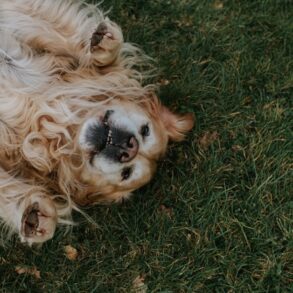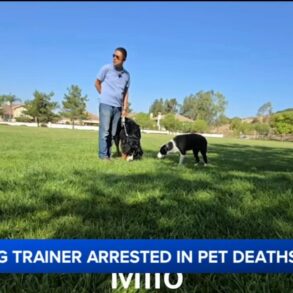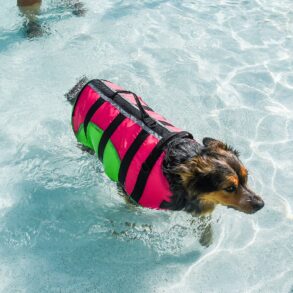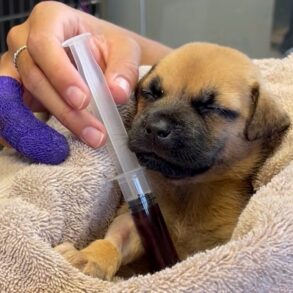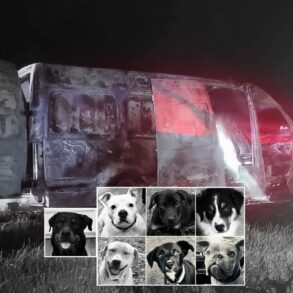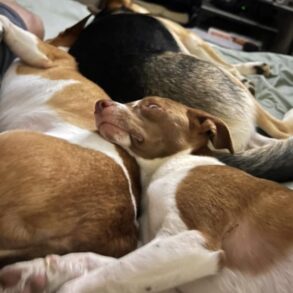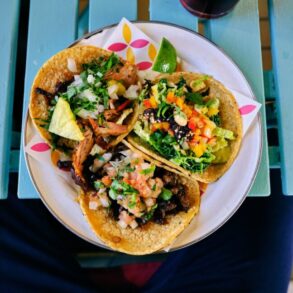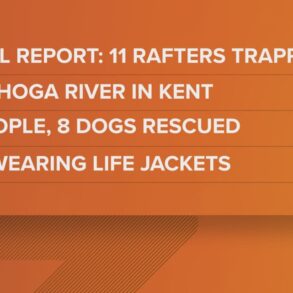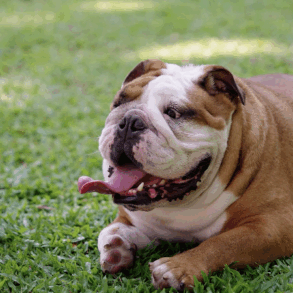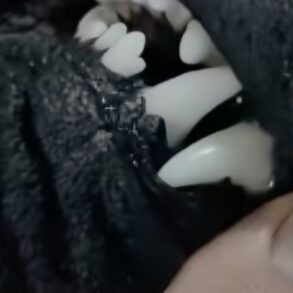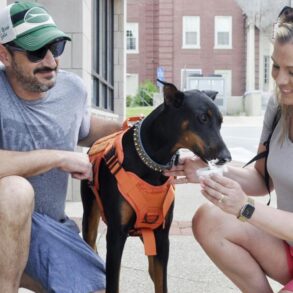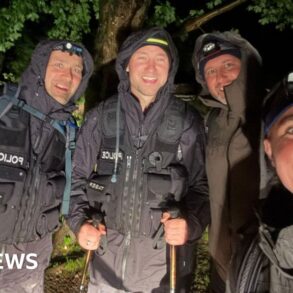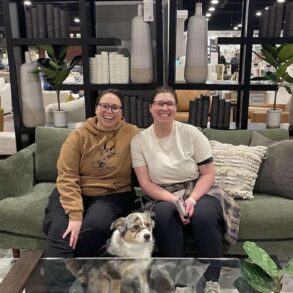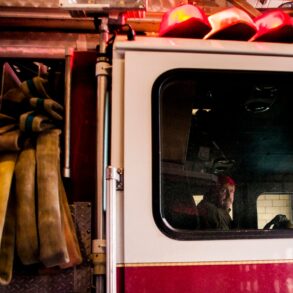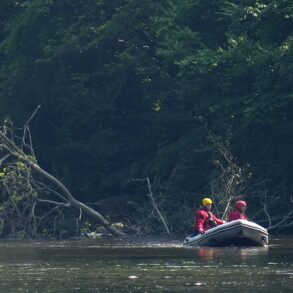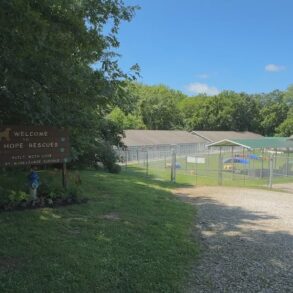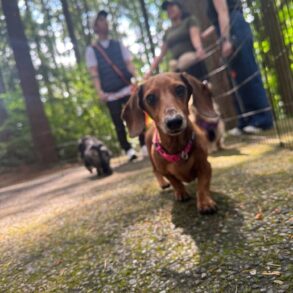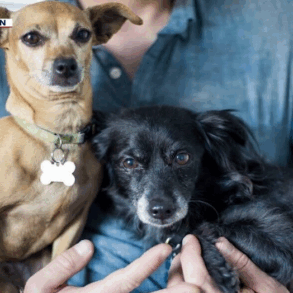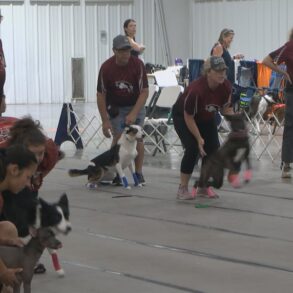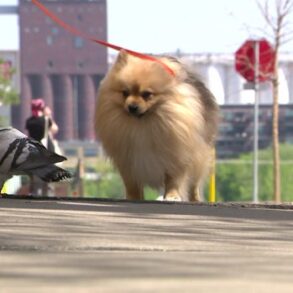
Nellie Farrell/Courtesy photo
When wolves began killing cattle and sheep on the Farrell ranch in Parshall, the owners, Nellie and Conway Farrell, tried nonlethal tools to keep the predators away. Fox lights flashed over their animals at night, a range rider traversed by horseback or vehicle and cracker shells boomed across the property. But Nellie credits four livestock guardian dogs with providing the most protection and giving her peace of mind.
“I’m an animal lover so my opinion may be biased,” Nellie said. “But after everything we’ve been through, the first time I’ve felt some form of comfort, is when we have the dogs around.”
Four livestock guardian dogs protect the sheep and cattle at the Farrell’s ranch in Parshall — Blondie, Monkey, Luke and Bo. Blondie and Monkey are Great Pyrenees; Luke and Bo are Turkish Kangals.
How effective are livestock guardian dogs versus other nonlethal deterrents?
Ranchers can’t kill or injure wolves unless they are caught “in the act of attacking” livestock or working dogs, so they rely on nonlethal tools such as noise and light devices and fladry.

The Farrells experienced their first depredation in April. Wolves continued to attack their cattle and sheep herds up until July. Ranchers believe that the Copper Creek Pack was responsible for these killings and records from Parks and Wildlife show the adult wolves were involved in depredation incidents. The pack included two parents and four (possibly five) pups.
Nellie and Conway used fox lights, critter getters, cracker shells, as well as range riders. A turning point came in mid-July, when the couple purchased two Great Pyrenees dogs.
“We’d never needed guard dogs before, so this is very new to us,” Nellie said. “We purchased them ourselves.”
They decided to get the dogs as fully trained adults, which is more difficult than finding puppies.
“We spent many man-hours trying to find breeders,” she said. “We didn’t have time to get a litter of puppies and train them — the wolves were already attacking. So, we wanted ready-to-go dogs.”
The Great Pyrenees brothers made themselves right at home with the Farrell’s animals. This breed of dog is known for their large stature, thick white coat and devotion to duty — especially taking care of livestock. Monkey and Blondie had been trained with cattle.
“We introduced them to our bottle-fed calf that we ran with our sheep. Then we started training them with our sheep, and they caught on really quickly; it’s that natural instinct,” she said.
Monkey and Blondie’s protection skills were put to the test a little over a week after they arrived at the ranch.
“We had that big wolf attack that took out a large number of our sheep all at once,” Nellie recalled.
After this attack, Colorado Parks and Wildlife confirmed eight sheep had been killed; the Farrells say they lost over 20 sheep.
“The Great Pyrenees were there; I think that they saved as many as they could, because I think they deterred the wolves from the flock and kind of spread them out,” Nellie said.
A litter over a week after the attack on their sheep, the Farrells purchased two more guardian dogs to bolster their protection — Turkish Kangal brothers Bo and Luke. For guardian dogs to be most effective with large herds (as the Farrells have), more can be better. In small herds, one or two dogs can effectively cover the landscape.
The Farrells had to go out of state to find Bo and Luke.
“It’s really hard to find dogs now honestly, I think because there didn’t used to be a huge need, and now everybody wants them,” she said. “Everyone’s afraid for their kids and all sorts of livestock.”
Since having these four dogs, the Farrells haven’t experienced any depredations.
“We really like them, and we’re interested in getting more and spreading them out on all of our properties,” she said.
The guardian dogs have gentle demeanors — except with predators
The Farrells have two young kids, so Nellie’s first concern before bringing the dogs home was that they all would be gentle with children. Nellie was also unsure if four adult dogs might fight amongst themselves.
“They’re different breeds and both (sets of) brothers are from different litters, and they’re males, so you never know,” she said. “I didn’t know what kind of dogs they would be.”
But just as aggressive as the dogs are with predators, they’re often equally as kind with people and other animals. After a few days, all four dogs were working together as a team.
“They seem to be getting along great, they’re sweet dogs,” she said, adding that all four are also amazing with her kids.
“They’re intimidating to look at. But then once you get up close to them, you realize they’re just big lovers,” she said.
A month after bringing home the Great Pyrenees, Nellie’s 3-year-old daughter Hillie Jo got a splinter in her finger. The dogs were with the sheep when Hillie Jo started “screaming bloody murder,” Nellie said.
“The two Great Pyrenees came out of nowhere — were checking on her, giving her licks and making sure she was OK,” she recalled. “As a mom, you know, I’ve been so worried about wolves that it was really comforting they were so quick and attentive.”
How guardian dogs protect livestock
Nellie said that their family’s livestock guardian dogs are trained to chase the predators away, rather than physically attack the wolves.
When Colorado Parks and Wildlife relocated the Cooper Creek Pack in September, the adult male was found with injuries to his hind leg — the male later died of the injuries. According to Wolf Conservation Program Manager Eric Odell, the injuries were likely caused by another carnivore.
A necropsy of the male wolf is underway. Officials have said the results of this necropsy will be available to the public. Whether the male’s injury is due to a guardian dog is unclear, but in best case scenarios, the dogs will chase the wolves away without a physical altercation. Their duty is to also bark to alert ranchers that predators are nearby.
Another reason dogs are bred to deter rather than attack is because of they are at risk of being injured or killed by a predator if they physically engage. Wolves, bears and mountain lions are all threats guardian dogs must face. But generally, multiple dogs can hold their own. The towering Turkish Kangals have a bite force psi of 743, which is more than three times the force of an average dog. A Great Pyrenees’ psi is 500.
“For the families out there that are worried about their livestock and their pets that they care for every day, and their children, it’s been a huge comfort to me as a mom and an animal lover that we have these dogs that can protect and that are great for our kids.”
Nellie Farrell speaks about the benefit of livestock guardian dogs for ranching families
Guardian dogs aren’t a one-size-fits-all solution
Although livestock guardian dogs can help, Nellie gave a caveat. Dogs can’t prevent all depredations, and they may not work for every rancher, depending on their operation. Hobby ranchers who are only on an acre or two may run into issues with the dogs in town near lots of people. On the flip side, some ranchers have multiple herds spreads across vast properties, which is too much terrain for the dogs to keep track of.

Even with the two dogs to start, the Farrells did experience some depredations. Nellie added that the dogs are more effective at protecting their sheep rather than cattle. Animals like sheep and goats are easier to keep in smaller areas for the dogs to patrol.
“Our cattle have taken the brunt of some of these attacks,” Nellie said. “It’s because we have leases out on BLM and state ground — thousands and thousands of acres, and there’s only so much we can do to protect that.”
The Farrells decided to keep the dogs mostly with their sheep flock, which was also facing attacks.
“It was close to our headquarters, where the kids go every day. We’ve been concentrating on that area with all the dogs,” she explained.
Having the dogs closer also allows the family to learn more about how the dogs protect the flock.
“It’s kind of new to us, but it seems to be working,” she said.
Livestock guardian dogs were used for centuries
Loss is part of livestock ownership, which includes disease, weather events and predators. A rancher’s duty is to protect and care for the livestock the best they can, while weathering losses.
Wolves added another challenge to ranching in Colorado, but Nellie feels much more confident with their livestock dogs.
“You can’t put a dog in my life and not have me love it,” she said. “I can’t believe I’ve gone this long without them; I feel like I have to have them.”
Thousands of years of selective breeding have made these dogs experts at what they do — staying with herds to keep predators at bay, while also being friendly with people. History proves the dogs are effective protectors.
For example, the Great Pyrenees descended from white shepherd dogs that guarded flocks 10,000-11,000 years ago. Now in 2024, these dogs are becoming the first line of defense in Colorado.

The U.S. Department of Agriculture, in partnership with Animal and Plant Health Inspection Service, will provide livestock guardian puppies to producers in the state for free.
According Lauren Emerick, USDA’s nonlethal wildlife specialist, producers can get two free Turkish Kangal puppies, the first year of medical costs covered and the USDA provides assistance with training.
For some Grand County ranchers, this program may be a solution to keeping their animals safe.
“For the families out there that are worried about their livestock and their pets that they care for every day, and their children, it’s been a huge comfort to me as a mom and an animal lover that we have these dogs that can protect and that are great for our kids,” Nellie said.
To learn more about the USDA’s livestock guardian dog placement program, please email Lauren Emerick at lauren.emerick@usda.gov or call 248-819-1702.
This post was originally published on this site be sure to check out more of their content.



